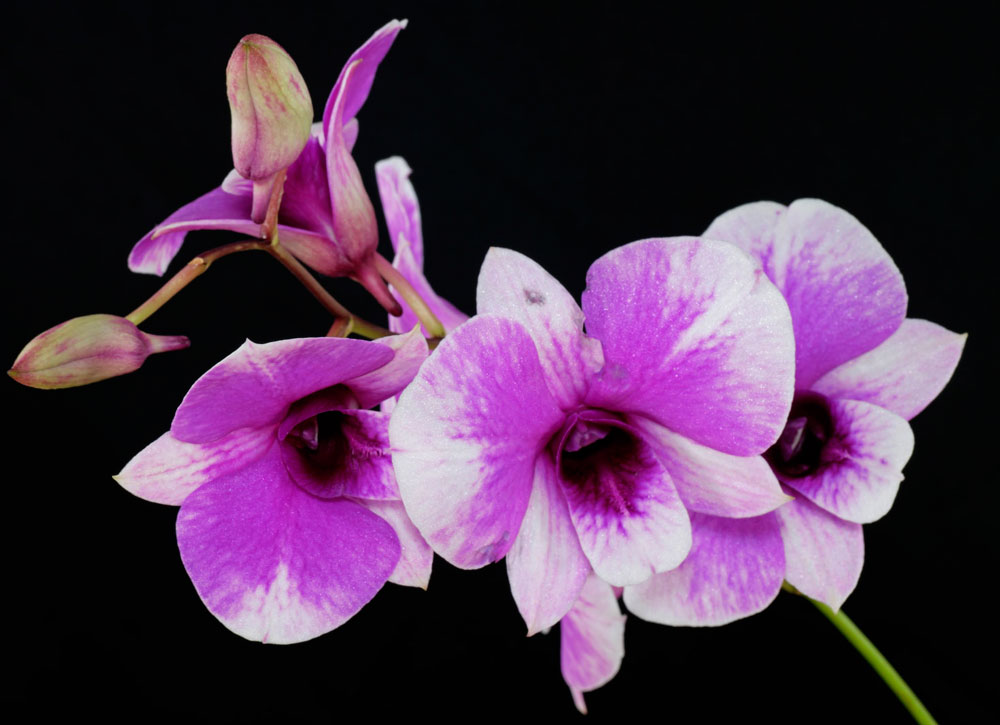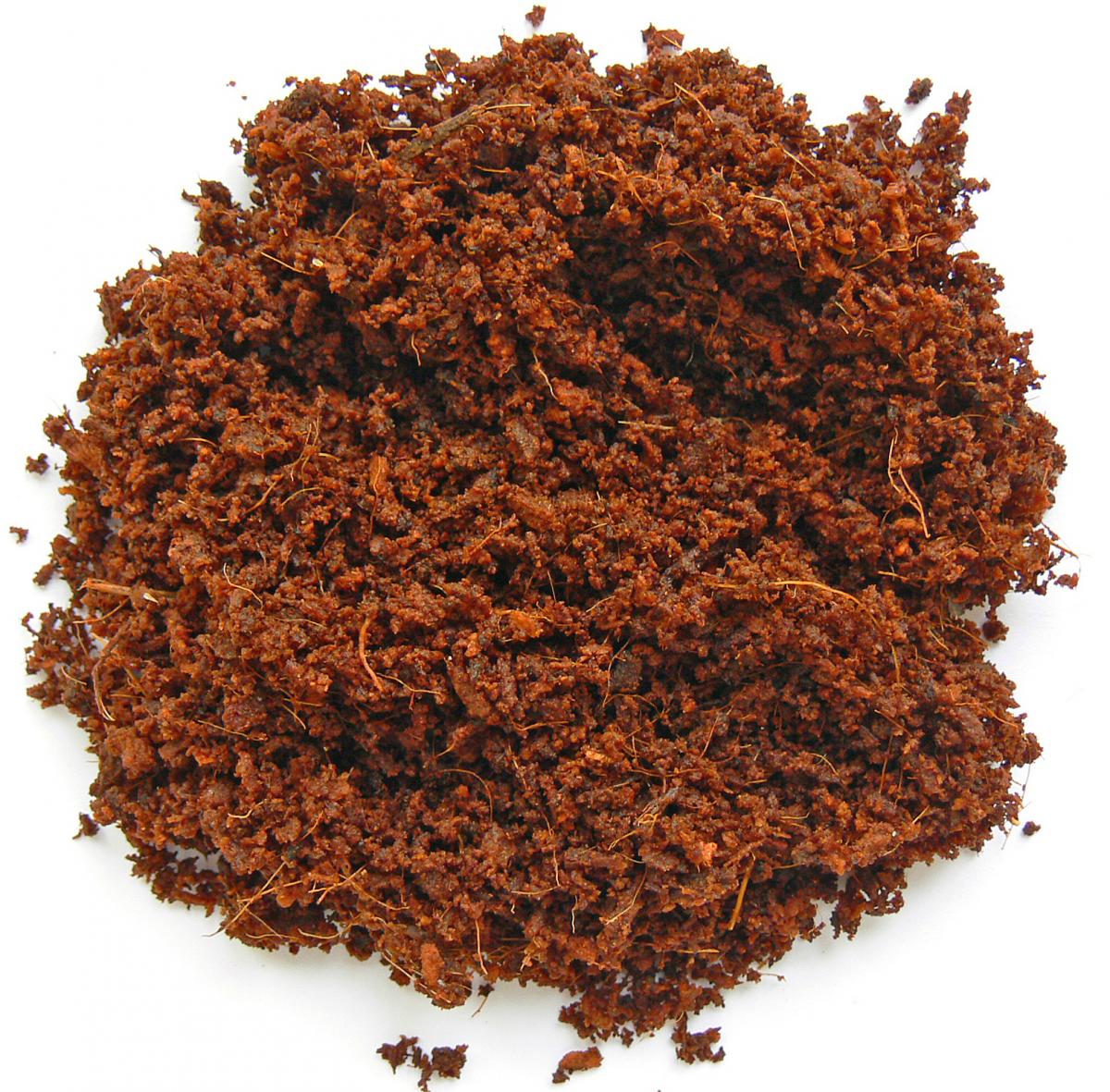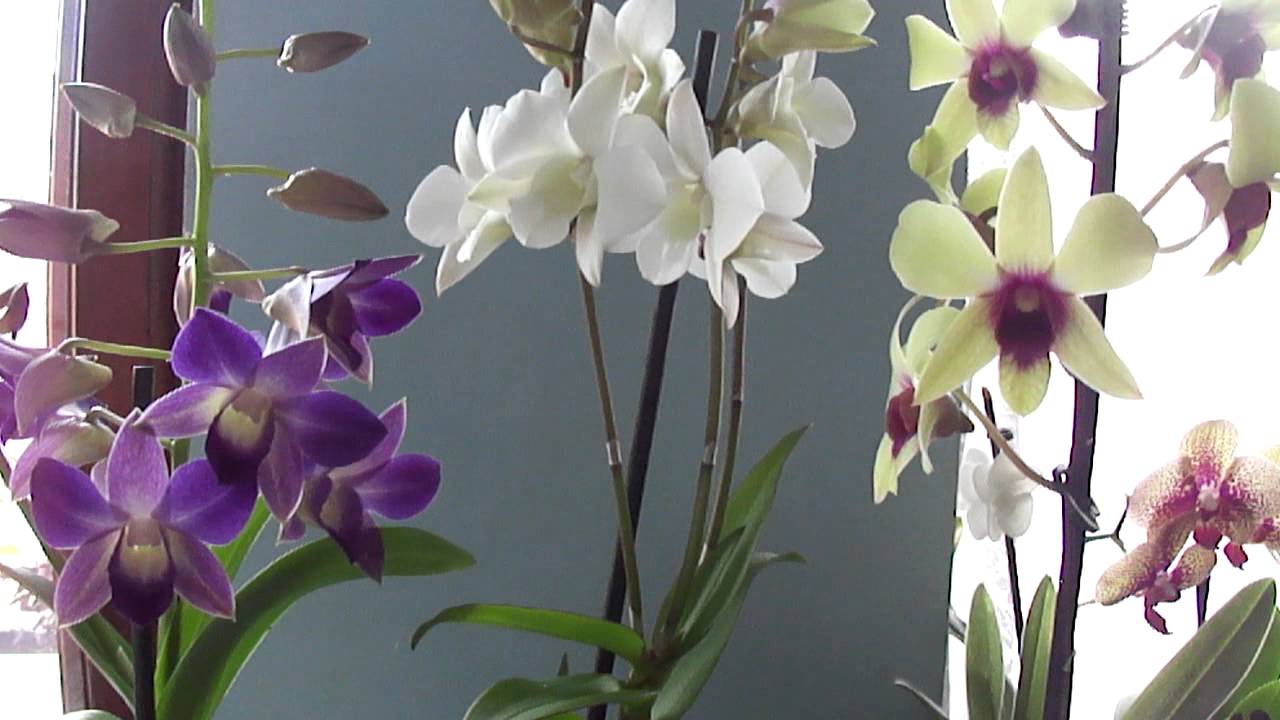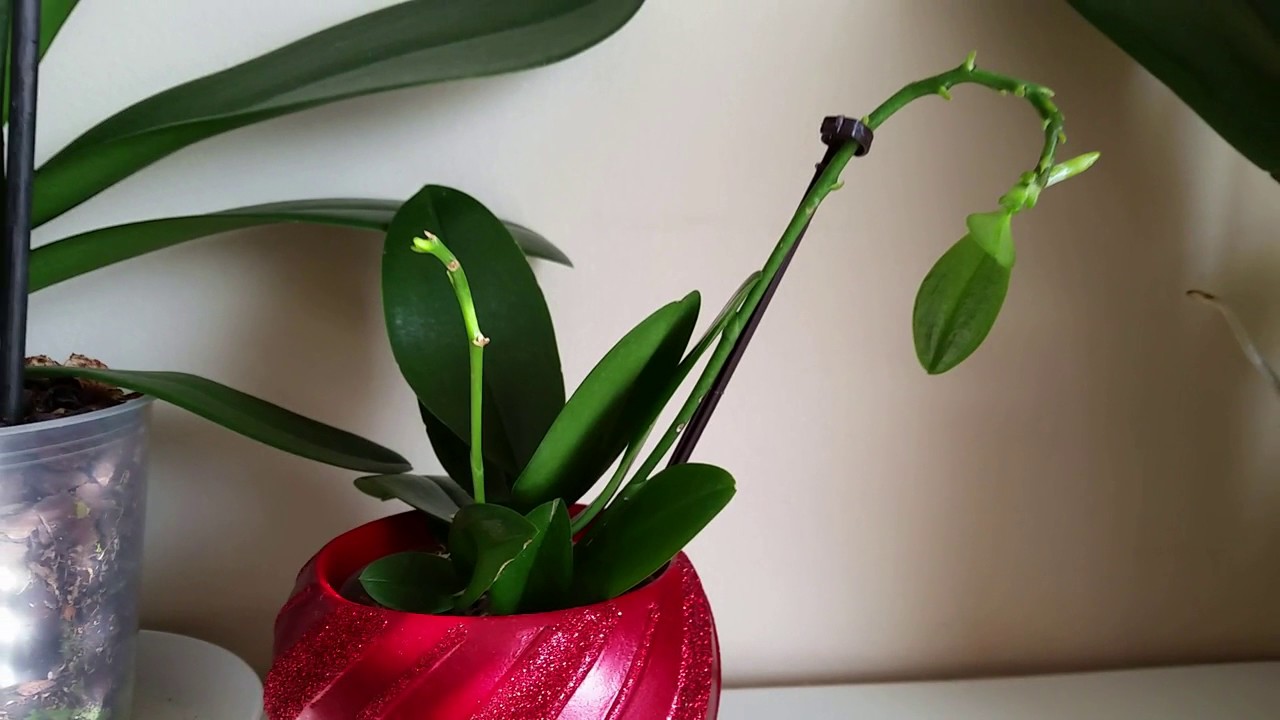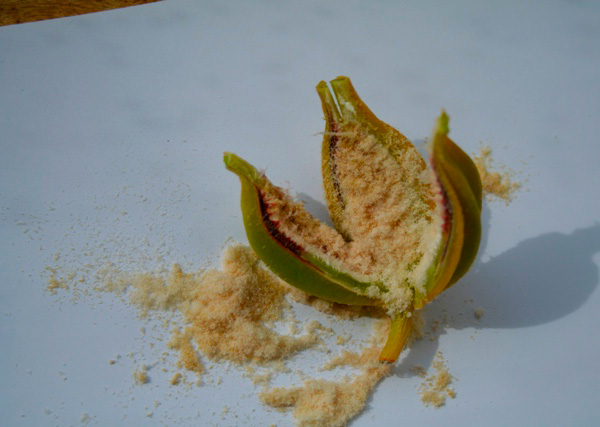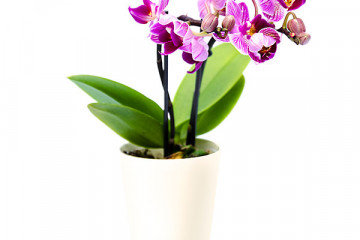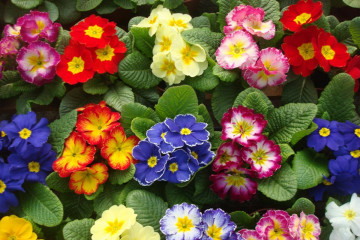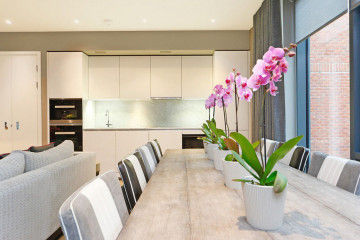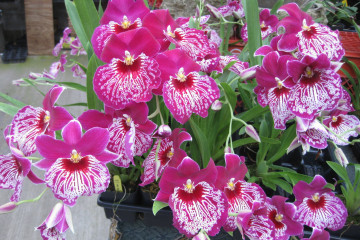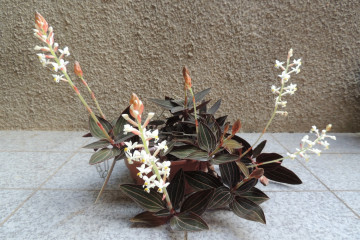Orchid home care: options for reproduction and planting a flower
Content:
Growing an orchid at home requires certain skills and knowledge. She is quite demanding in care and maintenance. An orchid is a flower that grows on other plants. This feature is inherent in epiphytes. Given this fact, growing it at home does not take place in a very traditional way. The following describes how to care for your orchid at home.
Rules for caring for a flower at home
An orchid, for which home care is different from caring for other indoor flowers, is very moody. The first thing that distinguishes it is the substrate in which it grows. It is also recommended to pay special attention to the pot. A potted orchid should feel free.
It is undesirable to use a container made of clay, since the delicate roots of the orchid grow to the porous structure of the walls of the pot, which subsequently excludes the possibility of carefully planting the plant.
Even the color of the pot is important for the healthy development of the plant. Experts advise purchasing containers of light shades, even better transparent. This is due to the fact that the dark color of the pot attracts the sun's rays, therefore, it heats up more, the root system of the flower suffers from this.
Room temperature and humidity
The optimum temperature range for an orchid is 16-23 ° C. At temperatures from 12 ° to 15 ° C, the plant will bloom more luxuriantly, but the color will not last as long as, for example, in more comfortable conditions. The plant prefers high humidity, which ranges from 60 to 70%.
Regularity of watering
Watering should be taken very seriously. The orchid loves warm, settled water, the temperature of which is 30-35 ° C. Watering is carried out in a pallet. A common option for saturating the roots with moisture is to place the flower pot in a wider container of water for 20-30 minutes. This time is quite enough for the roots to take up the required amount of moisture.
These flowers can be given a hot shower once every few months. Its water temperature should be about 40 ° C. The orchid is watered for several minutes with a weak pressure of water from the shower, after which the flower must be allowed to dry. Only the core of the flower should be wetted immediately.
The orchid should never be watered in direct sunlight. Also, water should not get into the flowers themselves.
The soil
A specialized substrate suitable for orchids can be purchased in stores or you can make your own. The root system of the orchid must be in direct contact with air. Most often, pine bark, processed in boiling water, is used for a self-made substrate.
Then it is mixed with dry moss and laid out in a small layer on the prepared drainage, consisting of polystyrene. Orchid roots are laid out neatly. They should not be crushed by anything. Sprinkle lightly on top with the remaining mixture.
Top dressing
The orchid is calm about all sorts of feeding. For a flower, both a special fertilizer for orchids and a universal one, suitable for all other indoor plants, are suitable.
During the period of active growth of the plant, feeding is carried out once a week, immediately after watering. An adult flower needs fertilization once a month.
Lighting
The orchid loves light. However, it should come in moderation. The plant must be shaded from direct sunlight. At home, the flower feels great on the eastern or western windowsill. If the orchid lacks sunlight, it must be supplemented with artificial light. It is very simple to understand that a flower needs light.
With its lack, the leaves begin to turn yellow. In this case, it will be enough to place the plant under a 60-watt phytolamp and spray it with warm water in the morning. As a rule, the lamp is used during the autumn and winter periods of the year.
Also, the lack of lighting slows down the release of peduncles.
Potted orchid care after purchase
The most common indoor orchid is called Dendrobium Phalaenopsis. It stands out among other varieties in a larger color and a fairly strong immunity.
Plant quarantine
After the plant is brought home from the store, it should be quarantined. It lasts about 14 days. This time will allow you to identify diseases, if such are present in the orchid, and get rid of them so that other indoor plants do not become infected.
It is recommended to inspect the trunk and leaves of Phalaenopsis daily for cobwebs or harmful insects.
Lighting
For a newly purchased flower, choose a location where the sunlight is slightly diffused. It is categorically impossible to place an orchid under direct sunlight, as they can scorch the root system of the plant or its leaves. There is a misconception that direct sunlight accelerates the growing season.
Watering and feeding
Feeding the plant during the quarantine period is undesirable, as it can provoke the development of fungal diseases. Watering Phalaenopsis within 14 days after purchase is also not recommended.
The creation of such stressful conditions will allow the orchid to quickly adapt to new conditions, as well as sooner to release flower stalks.
After two weeks, you can begin to fertilize and saturate the flower with moisture. This should be done gradually so that the plant feels calm in its new location.
Orchid transplant conditions
When buying, you should pay attention to the soil in which the orchid is located. In most cases, the flower does not require transplanting. The substrate should be changed only when mold is found in it, or there is an admixture of peat. Peat creates a moist environment in which the roots of the plant can be attacked by rot. Sphagnum moss retains moisture well. However, it can be used in small quantities in the manufacture of a substrate for Phalaenopsis.
Orchid breeding options
There are several ways to reproduce Phalaenopsis at home. The most common options for how to propagate and how to plant an orchid:
- Cuttings;
- Sprouting a peduncle in water;
- Budding;
- Roots;
- Seeds.
Reproduction by cuttings occurs according to the following algorithm:
- The lower leaves must be cut from the trunk. The cut sites are immediately disinfected with a weak solution of activated carbon.
- After a while, small roots will appear at the site of the cuts. A new cut must be made at a distance of 0.5 cm below the emerging roots. The cut site is processed immediately.
- The cut cutting is recommended to be planted in a slightly damp substrate. Watering and feeding in the first few days after planting a young plant should be excluded.
- After 2-2.5 months, a new plant is formed from the cuttings.
A peduncle is grown in water if the main plant is attacked by a disease, and it cannot be reanimated. The color is cut from such a mother flower. The stem should be at least 7 cm. The peduncle is immersed in warm water to a depth of 4-5 cm.
1 tablet of activated or charcoal is added to the water. If within 4-5 days the kidney does not open on its own, it can be awakened by cutting off the thick skin from above. The cut site is usually smeared with cytokinin ointment.
Budding is carried out on those plants whose age does not exceed 2 years. The kidney needs to be stimulated. Stimulation occurs at the end of the winter period. To do this, the orchid is turned towards the sun's rays so that they fall on the kidney. During this period, the plant is limited to watering and fertilizing.
The baby is separated from the mother plant when the length of the formed roots exceeds 5 cm.
The root propagation method is the easiest and most convenient. For this, the main plant is removed from the container. At the same time, the roots are carefully freed from the substrate. After that, it is necessary to divide the rhizome with a sterile knife.
2 pseudobulbs should remain on the roots to form a sprout. The resulting pieces are seated in separate pots. Planting is done at home, in a shaded area.
Seeds
Seed propagation is considered the most time consuming method, since it is very difficult to see them with the naked eye. If reproduction takes place at home, orchid seeds are pollinated on their own with a toothpick.
After ripening (this happens on average after six months), they can be isolated from the box. Further, these seeds are placed in a nutrient medium. You can make it yourself, you can buy it in specialized stores.
Such planting material can be germinated in sterilized glass containers, which are tightly closed with lids. After another 6 months, sprouts can be seen in the containers. With the help of a thin and soft brush, they are placed in a substrate of wood and moss.
It will be possible to plant these seedlings in a substrate for adult plants not earlier than in 4-5 months. The flowering of these plants will begin no earlier than in 5 years.
Even experienced owners of this plant cannot always tell how to grow Phalaenopsis from seeds, although they know firsthand how to properly care for an orchid.
